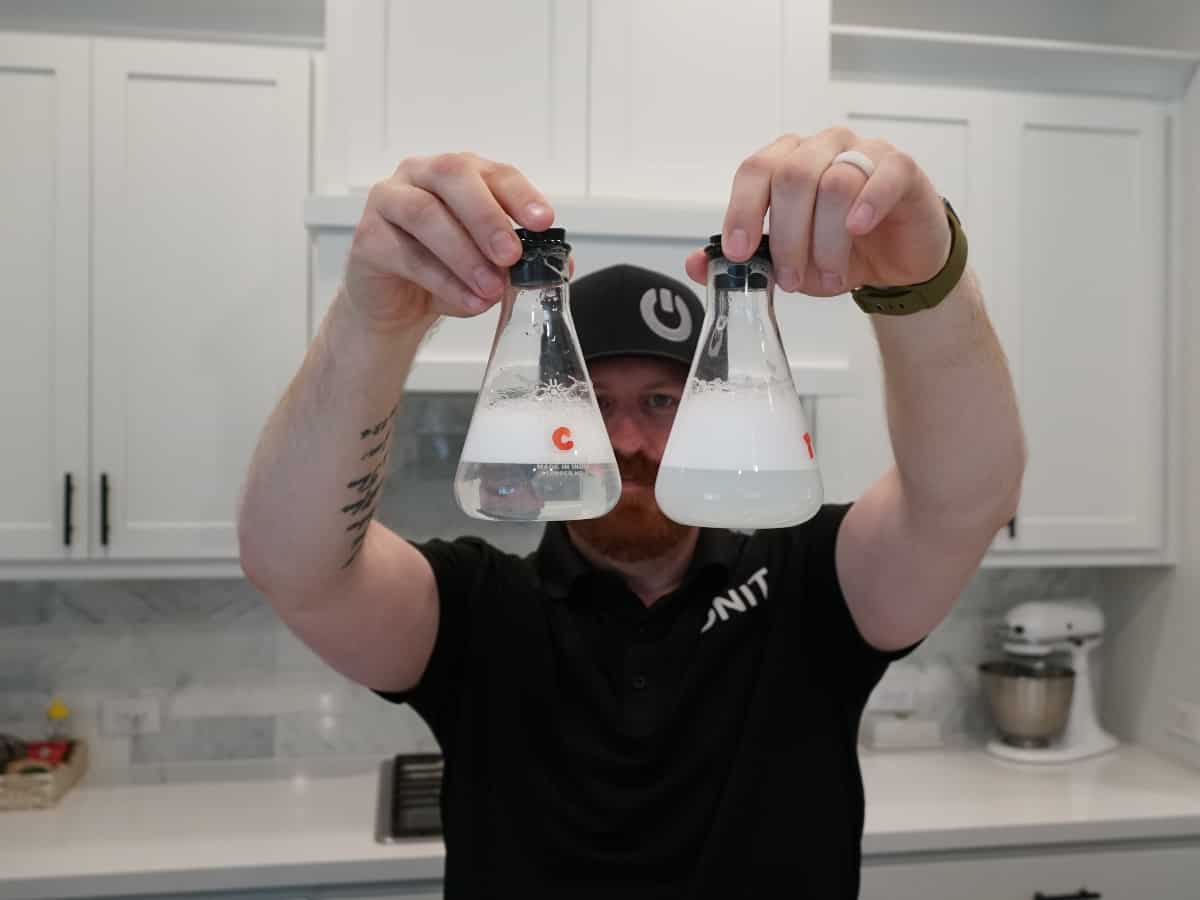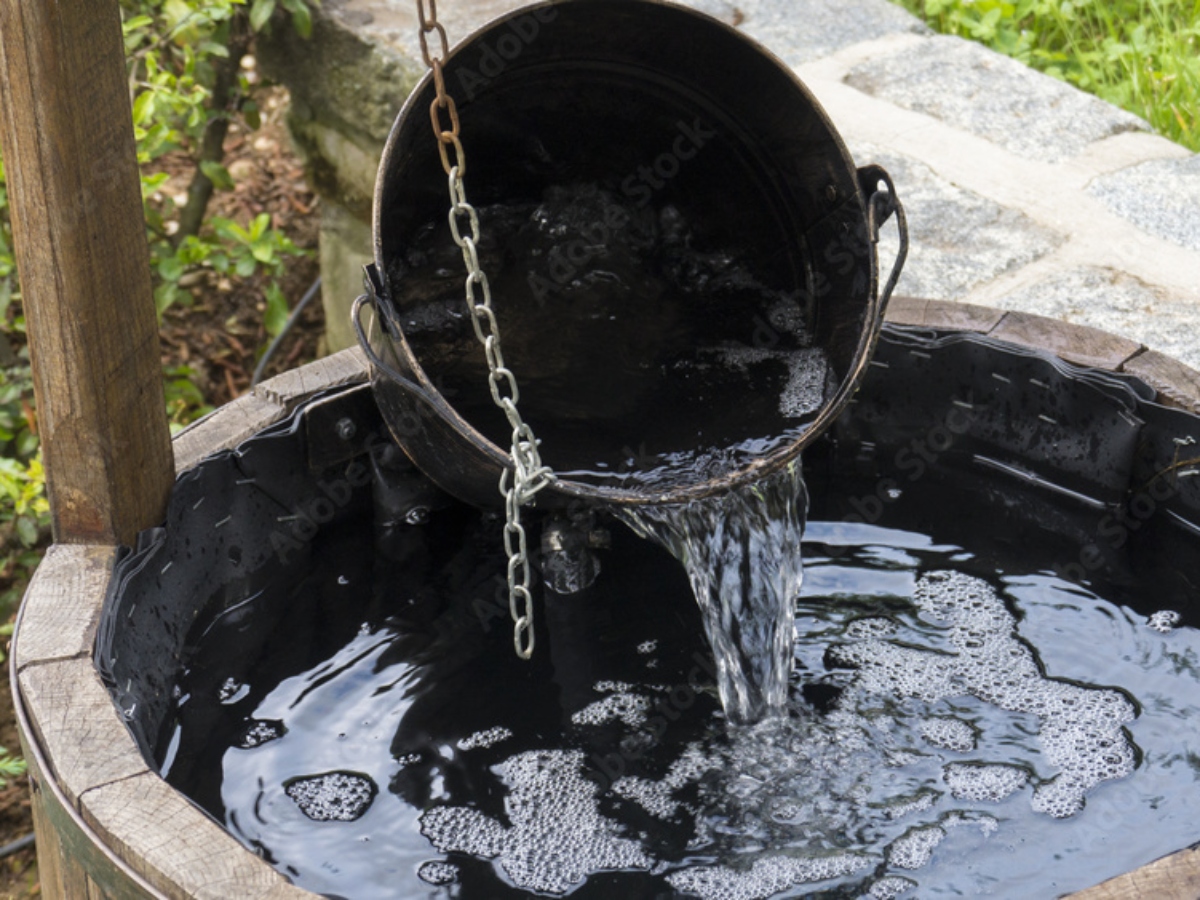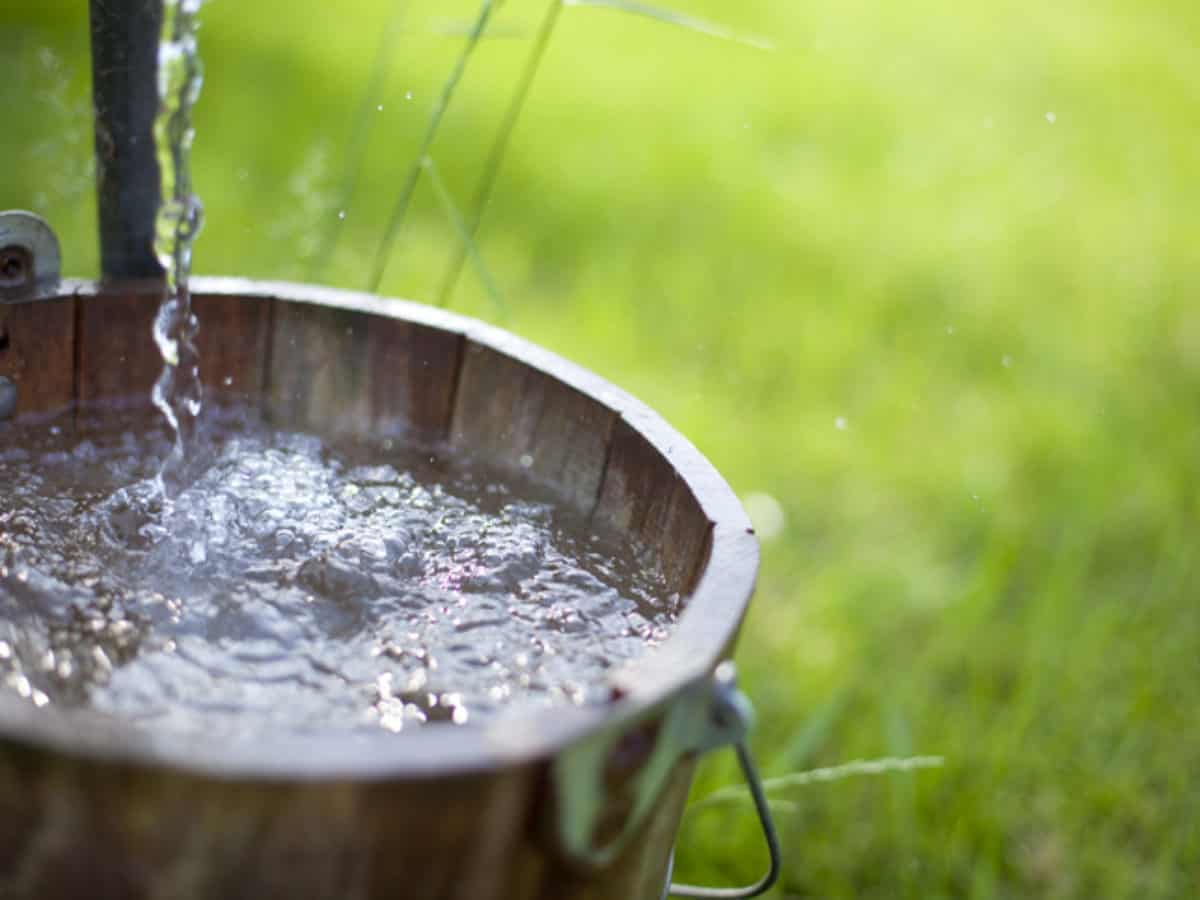As a well owner, it’s your responsibility to maintain the quality of your well water. The best and most important thing is to test your water for contaminants. One common problem you may encounter is arsenic in well water. In a national study of groundwater quality by the USGS, nearly half of the wells tested had arsenic levels of 1 µg/L or greater. In addition, 7% of the wells tested had arsenic levels exceeding the safe levels of 10 µg/L.
If ingested, inhaled, or absorbed through the skin, arsenic can harm human health. Even though the standard level is now 10 ppb, down from 50 ppb, these levels are still high since they still pose health risks in the future.
Let’s look closely at arsenic in well water, how it gets in your well, and the health problems it may cause. We also provide a solution if this contaminant is in your well water.

What Is Arsenic?
Arsenic (As) is a ubiquitous chemical element with atomic number 33. It naturally occurs in the earth’s crust and is mainly found in water, air, food, and soil. It occurs in both inorganic and organic forms. The inorganic form is the one that is most commonly found in water, soil, and air. In its inorganic form, arsenic is highly toxic.
Arsenic is also common in several industries, such as mining, smelting, and glassmaking. It is a metalloid, meaning it exhibits metallic and nonmetallic properties. Arsenic’s main use is in alloys of lead (like in lead car batteries and ammunition). You can be exposed to arsenic if you drink water that contains high levels or use water from arsenic-contaminated wells for cooking. Arsenic can be present in your well water without your knowledge because it has no taste, odor, or color.
If you’re thinking of switching from well water to municipal water because of arsenic, that’s not a solution. It is important to note that even the city water contains arsenic; however, the levels are regulated. The public water system cannot lower arsenic to less than 10 ppb in areas where it’s prevalent.
According to the Environmental Working Group (EWG), arsenic is in drinking water in all 50 states. However, the level of arsenic differs in each state.
What Causes Arsenic in Well Water?
There are many potential causes of arsenic in well water. Some of the most common include:
Natural Deposits of Arsenic on the Earth
Since arsenic can occur naturally in rocks and soil, it can easily leach into groundwater. Water from wells drilled into the bedrock is likely to have higher arsenic levels than surface water sources or dug wells.
Industrial Pollution
Industrial processes such as mining, metalworking, and agriculture can contaminate groundwater with arsenic. For example, if a factory disposes of hazardous waste in an unlined landfill, the arsenic can seep into the groundwater.
Runoff from Agriculture
Some agriculture chemicals, such as fertilizers, pesticides, and herbicides, contain arsenic. When these substances are sprayed on the ground and it rains, the runoff enters groundwater, rivers, and streams. Your well water can get contaminated as a result. Using inorganic forms of arsenic in pesticides, wood preservations, medicine, and paints was restricted. However, importation for commercial use is still prevalent.
If you suspect your well water to be contaminated with arsenic, discontinue use immediately. It’s essential to have a professional test your water. You should also take steps to filter or treat your water to remove the arsenic and make it safe to drink. Contaminated water is the primary source of high levels of arsenic. There are other sources of exposure, including eating contaminated food.
Cooking food with water that contains arsenic contaminates your food. In addition, watering plants with contaminated water causes the plants to absorb the arsenic compound, especially if you have acidic soil. Furthermore, food grown in arsenic-rich areas, such as rice and vegetables, can absorb it. In addition, fish, poultry, meat, and dairy products can also contain arsenic. However, exposure to these foods is much lower than drinking contaminated water.

Should I Worry About Arsenic in Well Water?
Yes. You should worry if you test your water and find it arsenic. Arsenic is a known carcinogen, and it’s harmful to your health at high levels. Exposure to low levels of arsenic for long periods can also lead to adverse health effects. Here are some potential health implications of exposure to arsenic:
- High risk of bladder, liver, kidney, prostate, lung, and skin cancer
- Diabetes
- Skin lesion
- Kidney damage and other internal organs
- Cardiovascular and respiratory disease
- Thickening and discoloration of the skin
- Problems with blood vessels
- Heart disease
- High blood pressure
- Nerve problems, including numbness and/or pain
- Nervous system disorders
- Reproductive system disorders
- Partial paralysis
- Blindness
Short-term exposure to elevated arsenic levels can cause:
- Diarrhea
- Headaches
- Weakness
- Stomach pain
- Nausea
- Vomiting
- Death
Arsenic exposure in children has been linked to
- Poor school performance.
- Lower IQ
- Growth problems
- Breathing problems
- Impaired brain development
- Weak immune system
- Cancer as an adult
Pregnant women face an increased risk of miscarriage, stillbirth, and preterm birth when exposed to high levels of arsenic. It’s important to remember that health effects from low-level exposure can take time to manifest; they may not show up immediately.

How Do You Know if You Have Arsenic in Your Water?
If you suspect your well water may be contaminated with arsenic, the only option is to test it to be sure. The most accurate way to test your water for arsenic contamination in your drinking water is through a certified lab.
You can also test your water at home using a water test kit. These kits are less accurate than a lab test, but they can give you an idea of whether your water contains arsenic.
What Is the Safe Level of Arsenic in Water?
The Environmental Protection Agency (EPA) has set the maximum contaminant level (MCL) for arsenic in drinking water at 0.010 parts per million (10 ppb). This means drinking water that exceeds these levels poses higher risks.
However, it’s essential to note that drinking water with lower levels than the set standards for longer periods of time can also lead to health issues. That’s why experts recommend these levels be lowered further, as there is no safe level of arsenic in water. Furthermore, EPA has set the arsenic maximum contaminant level goal (MCLG) to zero.
If your well water has arsenic levels above 10 ppb, do not use it for cooking or drinking. However, these arsenic levels are safe for bathing unless they exceed 500 ppb. Water utilities take steps to reduce the level of arsenic in their water if it exceeds 10 ppb. However, to further reduce these levels, they need more advanced technology, which may not be economically feasible.
What Removes Arsenic from Well Water?
Arsenic is one of the top 10 substances that pose a severe threat to human health, according to the World Health Organization (WHO). There are a few methods that you can use to remove arsenic from water, including reverse osmosis, ion exchange, and distillation. Reverse osmosis is deemed the most effective way to remove arsenic from water.
Reverse Osmosis
Reverse osmosis (RO) forces water through a semipermeable membrane, which removes the arsenic from the water. RO can remove 95% of arsenic in water.
The membrane’s tiny pores allow water to pass while blocking other pollutants, including lead, chromium, and arsenic. The impurities are flushed away, while the clean water is collected on the other side. A typical RO system comprises a sediment filter, a semipermeable membrane, and a storage tank.
Distillation
Distillation is boiling water and collecting steam. The vapor condenses back into the water, leaving behind impurities like arsenic. This process can remove up to 99% of arsenic from water, making it a safe and effective way to eliminate this potentially dangerous element.
Nanofiltration
Nanofiltration uses tiny pores (nanometer-sized) in the membranes to remove contaminants from water. This process is in between reverse osmosis and ultrafiltration. The membrane has pores that range in size from 1 to 10 nanometers, which are smaller than those in ultrafiltration and bigger than those in RO. Nanofiltration can also remove other contaminants, such as viruses and bacteria.

Enjoy Clean Water with ONIT Home
Arsenic in water has become a global issue. Natural deposits of arsenic in the earth, industrial processes, and agricultural runoffs are the leading causes of arsenic in well water. It’s up to you as a well owner to ensure that your family drinks clean and safe water to avoid health issues.
This is where ONIT Home comes in! Our reverse osmosis systems offer a solution if your drinking water contains arsenic and other contaminants. Furthermore, we also provide a commercial-grade filtration system customized specifically for your home’s needs. Our water filtration systems are high-quality and reasonably priced to provide many years of use.
Contact us today for a free quote. You can also call us at 1-833-433-0331 to speak to our dedicated experts for any information. Need clean water? We’re ONIT.



